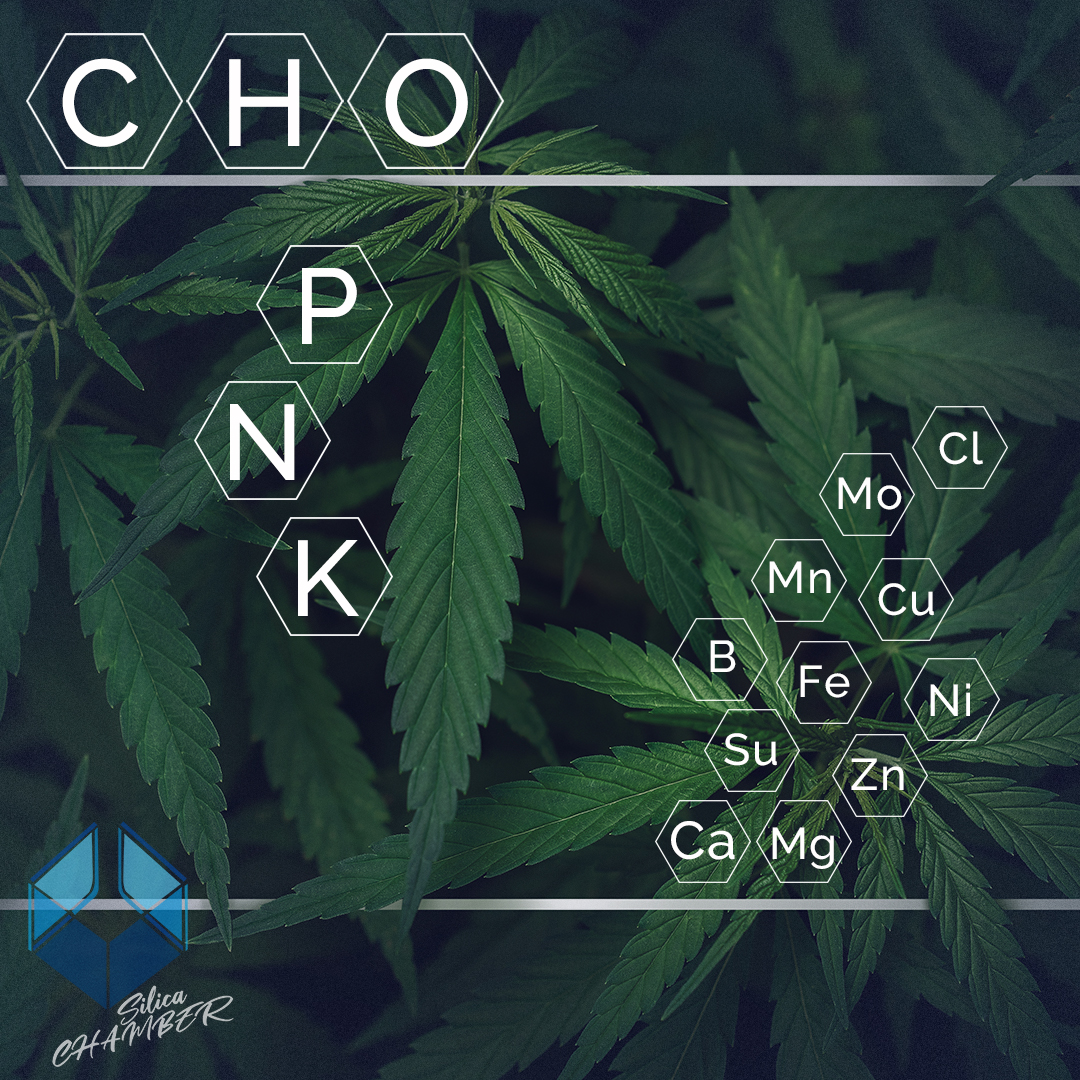
The Ultimate Cannabis Nutrient Guide
The Importance of Nutrients & Grow Medium
When growing cannabis, one of the most important factors influencing plant health and yield is nutrient balance. Whether you’re a beginner or an experienced grower, understanding how nutrients interact with your plants and adjusting them properly can make a massive difference in the final product. In this guide, we break down the key nutrients your cannabis plants need and explain the relationship between water use efficiency (WUE) and carbon dioxide (CO₂) levels.
The Grow Medium Used in This Study
For this research, cannabis was grown in 75% sphagnum peat-based media—a widely used growing medium that holds moisture well but also drains efficiently. This type of medium interacts with nutrients differently than hydroponic setups, meaning the way nutrients bind and absorb is a crucial consideration. Peat-based media can retain nutrients like calcium and copper, so adjustments must be made to prevent deficiencies.
Understanding Water Use Efficiency (WUE)
Water Use Efficiency (WUE) determines how effectively cannabis plants use water to generate biomass. It is expressed as grams of dry biomass per liter of water consumed.
- Normal WUE (~3 g/L): Cannabis typically grows 3 grams of dry weight per liter of water under normal conditions.
- High WUE (~4 g/L or more): With higher humidity and elevated CO₂ levels, cannabis can grow 4 grams per liter or more, requiring slightly higher nutrient concentrations.
- Key factors that improve WUE:
- Higher humidity: Reduces transpiration and conserves water.
- Elevated CO₂ (e.g., 1200 ppm): Stomata partially close, reducing water loss while increasing photosynthetic efficiency.
How CO₂ Enhances WUE
CO₂ is essential for photosynthesis. Increasing CO₂ levels impacts plant growth in several key ways:
- Stomata (tiny pores on leaves) partially close, preventing excessive water loss while still allowing CO₂ absorption.
- Higher CO₂ enhances photosynthesis efficiency, allowing plants to generate more biomass with less water.
- Lower transpiration rates lead to reduced irrigation needs, minimizing salt buildup in the root zone.
- Faster growth under high CO₂ means plants require adjusted nutrient levels to sustain their rapid development.
Nutrient Adjustments for Higher WUE
When WUE increases, nutrient uptake per liter of water decreases. Therefore, nutrient concentrations should be adjusted slightly upward—but not doubled.
Essential Nutrients for Cannabis Growth
Let’s break down the macronutrients and micronutrients cannabis requires for healthy growth.
Macronutrients (NPK + More)
| Nutrient | Recommended Concentration |
|---|---|
| Nitrogen (N) | 90–100 ppm (Normal WUE) → 120 ppm (High WUE) |
| Phosphorus (P) | 25–30 ppm (Research indicates cannabis requires more than traditional models suggest) |
| Potassium (K) | 120–130 ppm (Slight increase with CO₂, NOT doubled) |
| Calcium (Ca) | ~50–60 ppm (Cannabis absorbs more but doesn’t necessarily need higher levels) |
| Magnesium (Mg) | 15–20 ppm |
| Sulfur (S) | 17–21 ppm |
- Phosphorus (P) insight: Studies show cannabis benefits from nearly twice as much phosphorus as traditional models suggest, with 30 ppm being the optimal range for strong root and flower development.
- Potassium (K) insight: While potassium is critical for plant metabolism, elevated CO₂ does not require doubling K levels—keeping it around 130 ppm is ideal for supporting robust growth without overloading the medium.
- Calcium (Ca) insight: Cannabis absorbs high amounts of calcium, but 50–60 ppm is sufficient. Excess calcium doesn’t necessarily improve growth and can interfere with other nutrient uptake.
Silica (Si) – The Growth Enhancer
- While not an essential nutrient, silica strengthens plant cell walls and enhances drought tolerance.
- Target range: 15–17 ppm (lower if silica is present in the growing medium, such as rice hulls).
Micronutrients – Small but Crucial
| Micronutrient | Recommended Concentration |
| Iron (Fe) | ~1.0 ppm (Chelated Fe for best absorption) |
| Boron (B) | 0.4 ppm |
| Manganese (Mn) | 0.3 ppm |
| Zinc (Zn) | 0.3 ppm |
| Copper (Cu) | 1.0 ppm (Peat binds Cu, requiring supplementation) |
| Chlorine (Cl) | 1–2 ppm (Found in common salts like CaCl₂) |
| Molybdenum (Mo) | 50–60 ppb (Trace amounts required) |
- Iron (Fe) insight: Chelated Fe at 1.0 ppm prevents deficiency, especially in fluctuating pH conditions, ensuring steady chlorophyll production.
- Copper (Cu) insight: Peat-based media binds copper, making supplementation crucial—1.0 ppm ensures plants have sufficient Cu for enzyme activation and growth.
- Molybdenum (Mo) insight: Required only in trace amounts, 50–60 ppb is sufficient to support essential enzyme functions without excess buildup.
Adjusting Your Nutrient Schedule
- Start with a balanced base fertilizer (e.g., 21-5-20 NPK with essential micronutrients).
- Supplement strategically:
- Adjust P levels to 30 ppm.
- Add silica if not naturally present in the medium.
- Use Epsom salts (MgSO₄) for magnesium + sulfur.
- Ensure iron and copper levels are met.
- Assess plant response: Make incremental changes if deficiencies appear.
Watering Considerations: Managing Leaching
- Excess runoff leads to nutrient loss. Control leaching to maintain stable root-zone nutrient levels.
- Reducing unnecessary runoff prevents fertilizer waste and imbalances in the root zone.
Final Takeaways
By following these optimized nutrient strategies, cannabis plants exhibit stronger growth, better nutrient absorption, and improved resilience. Key takeaways:
- Adjust nutrient levels moderately for high CO₂ and WUE conditions.
- Avoid excessive supplementation—nutrient imbalances can be detrimental.
- Monitor plant feedback carefully and refine inputs accordingly.
This guide ensures that whether you’re a beginner or an experienced grower, you’ll be equipped with the knowledge to fine-tune your feeding strategy for maximum yields. Happy growing!
At The Silica Chamber, we blend science with hands-on experimentation, diving deep into peer-reviewed research to uncover the best in cannabis cultivation, consumption, and lifestyle. Whether you’re here to learn, experiment, or share insights, we’re building a community that thrives on knowledge and curiosity.
DavidPaul
In love with smart home designing, photography and nerding out over network architecture
